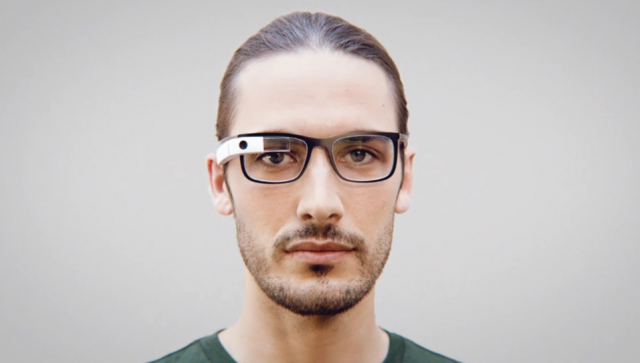
It seems inevitable that Apple will someday release a set of AR glasses, and today we have a set of rumors from YouTuber Jon Prosser of the "Front Page Tech" YouTube channel. Prosser is a fairly new leaker, but AppleInsider has a good roundup of things he has gotten right in the past. He claims to have seen video of a prototype of the glasses and has a surprisingly long list of details for Apple's Next Big Thing.
First, we have a name. Prosser claims Apple's AR glasses will be called "Apple Glass," just like Google Glass. Apple Glass apparently looks like an actual pair of glasses and has a claimed "$499 plus prescription" price point. The report says the glasses are planned to be a "One More Thing" announcement in Q4 2020 or Q1 2021. Apparently, Apple originally planned to announce the glasses alongside the iPhone 12, but Apple "wants the media present" when Apple Glass is announced, so the plan is to wait out the whole coronavirus pandemic so people can be there in person. An actual launch would be nearly a year later in "Q4 2021 - Q1 2022."
Prosser even claims he has seen a video of a prototype version of Apple Glass, and with the caveat that anything could change on the prototype, he shared a few more details. First, he claims "all data is processed on the iPhone" and gives the first-gen Apple Watch as an example of similar functionality. Presumably, that means the glasses will need to be paired to an iPhone at all times and that the glasses would, at a minimum, lack Internet connectivity. Prosser says the frames were plastic and could be charged wirelessly with an included stand. There was no camera on the device due to privacy concerns.
Prosser says the right temple houses a lidar sensor, which is most likely building on the miniaturization work Apple did on the 2020 iPad Pro. The iPad Pro has a lidar sensor in the camera array, which plugged in to Apple's SDK and gave existing ARKit apps more solid tracking. There has been plenty of speculation that Apple's current AR work is designed to smoothly transition developers to AR glasses apps, and this would line up with that speculation.
Prosser says the prototype displayed information in both lenses, and the UI is called "Starboard," a good companion name to iOS' "Springboard." The device was "controlled via gestures on and in front of the device" and could "scan proprietary Apple QR codes," which presumably would have to be specially designed, since, remember, there's no RGB camera. Currently, there is no option for sunglasses.Apple's AR glasses have been rumored for years, and you can probably find reports out there claiming a launch date this year, next year, or the year after. A 2017 report from Bloomberg claimed AR glasses would be ready in 2020. Reports from last year claimed Apple's AR glasses would be pushed back to 2023, but that rumor describes a "sleek" and "standalone" headset. This rumor is splitting the difference with a late 2021 or early 2022 release date, but the glasses aren't standalone—you'll need an iPhone in your pocket.
Avoiding the mistakes of Google Glass
The Apple Glass' name and general product design will earn it a lot of comparisons to Google Glass, Google's failed heads-up display that was originally released in 2013. It sounds like Apple doesn't want to repeat a lot of the mistakes of Google Glass, and there are a number of key differences here. First, looking like an actual pair of glasses would be a big improvement over the Google Glass design, which looks like something a space alien would wear. Google Glass put a big block of glass in front of your face, which was distracting for the wearer or anyone talking to them. Glass has a single glass block, so it displays information in only one eye, while Apple Glass reportedly displays in both lenses.
Second, Apple Glass' lack of a camera is a smart move, since conversation around Google Glass was focused almost entirely around the face-mounted camera and whether or not people were being secretly recorded. Glass was one of the first consumer heads-up-display computers, but all anyone could talk about was where it was appropriate to wear a camera, basically boiling the product down to a face-mounted Go-Pro.The third big differentiator here is actual augmented reality technology, which would be able to sense the outside world in 3D and overlay information on it. Google Glass didn't do any real augmented reality—it was mostly just a transparent smartphone, meaning it showed a flat screen that was oblivious to what you were looking at and never interacted with the outside world. The future heads-up-display technology we all see in movies, like highlighting an object in your vision and telling you about it or overlaying navigation instructions in the 3D world, weren't possible.
The other major mistake of Google Glass was Google's typical half-hearted, "hobbyist"-style support of the product. Glass never really plugged in to the Google ecosystem, it had a terrible app SDK, and it never got the post-release support its users wanted (Glass Explorer #1499 here. I'm still bitter). Most observers think Apple is already gearing up developers for Apple Glass support. Apple's existing AR Kit SDK seems destined to work out of the box on Apple Glass, and things like the lidar component would give Apple Glass comparable hardware to the iPad Pro, which is already in developers' hands.
reader comments
179